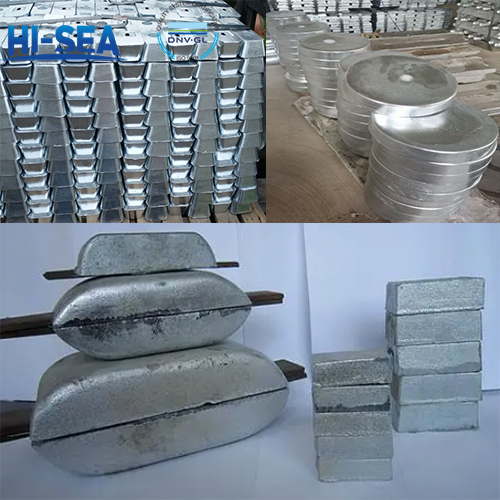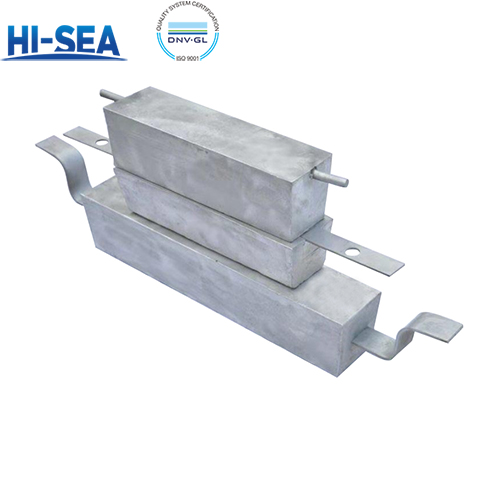
What is Marine Sacrificial Anode?
Sacrificial anodes have a wide range of applications, involving ships, bridges, pipelines, storage tanks and many other fields. In ship anticorrosion, sacrificial anode is installed at the bottom of the hull shell and corrosion-prone parts to protect the hull from seawater corrosion by constantly consuming itself.
Overview
Basic Principle of Sacrificial Anode
Sacrificial anode anticorrosion technology, also known as electrochemical protection method, the basic principle is to use electrochemical principles to establish a primary cell between two different metals. In this kind of primary cell, one kind of metal (i.e. sacrificial anode) acts as the negative pole, and the other kind of metal (i.e. protected metal) acts as the positive pole. When the two metals in the electrolyte environment, due to the potential difference, the negative metal will be preferred to corrosion, thereby slowing down or preventing the corrosion of the positive metal.
Material Selection of Sacrificial Anode
The material selection of sacrificial anode is crucial, which directly determines the anti-corrosion effect and service life. Common sacrificial anode materials include zinc, aluminium, magnesium and its alloys. These materials have low electrode potential and high electrochemical activity, which can rapidly form a stable oxide film in the electrolyte environment, thus effectively protecting the protected metal.
When selecting sacrificial anode materials, a variety of factors need to be considered, such as the electrolyte environment, the type and nature of the protected metal, the anti-corrosion effect and service life. For example, in seawater environment, aluminium-based sacrificial anode is widely used because of its better seawater corrosion resistance and lower cost; while in soil environment, zinc-based sacrificial anode is often chosen.
Installation and Application of Sacrificial Anode
The installation position and method of sacrificial anode has an important influence on its anti-corrosion effect. Generally speaking, the sacrificial anode should be installed near the protected metal in order to better play its anti-corrosion role. In the installation process, it is necessary to ensure that there is a good electrical contact between the sacrificial anode and the protected metal in order to form a stable primary battery structure.
Sacrificial anode has a wide range of applications, involving ships, bridges, pipelines, storage tanks and many other fields. For example, in ship anticorrosion, sacrificial anode is installed at the bottom of the hull shell and corrosion-prone parts to protect the hull from seawater corrosion by constantly consuming itself; in bridge anticorrosion, sacrificial anode can be installed in the reinforced concrete structure of the bridge to prolong the service life of the bridge.
Pictures of Sacrificial Anode






